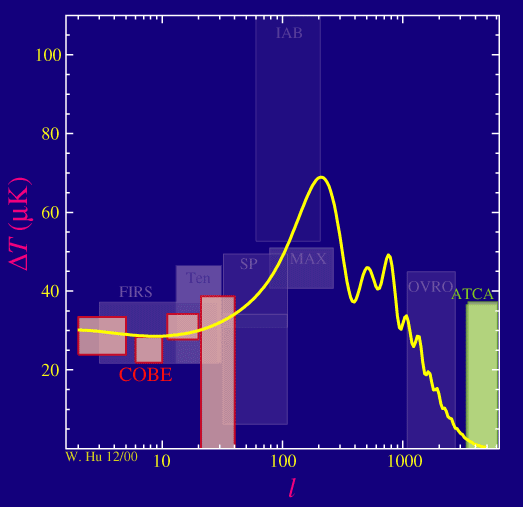
The discovery of the first peak has a long history and we cannot do justice to the enormous effort of the experimentalists spanning nearly a decade. For more detailed accounts, please see the web pages of the experiments themselves.
Closely following the COBE discovery of large-angle anisotropies in 1992, a series of experiments established the first detection of anisotropies at the degree scale (l~100). Through the middle years of the last decade, a combination of experiments determined that the power in the anisotropies rose through the low hundred mulipoles and fell by l~500, indicating a peak in between. Because of the difficulty in combining different experiments with different calibrations, it was difficult to localize the peak precisely. At the close of the decade several experiments had gained the dynamic range to cover substantial portions of the first peak in single experiments. It was at this point that the first peak was localized at l~200.

Finally, in 2000, the Boomerang and Maxima experiments convincingly measured the entire first peak (and beyond). The superb agreement between the measured shape of the first peak and predictions based on sound waves from inflationary perturbations is a triumph for the standard cosmological model on par with the COBE discovery itself. Many alternative cosmologies (e.g. structure seeded by cosmological defects alone) were eliminated by these measurements. Furthermore, its precisely measured position have important implications for cosmology as we shall now see.